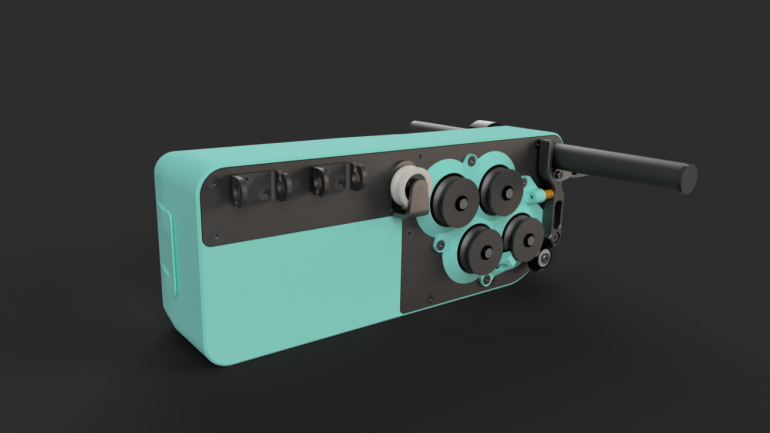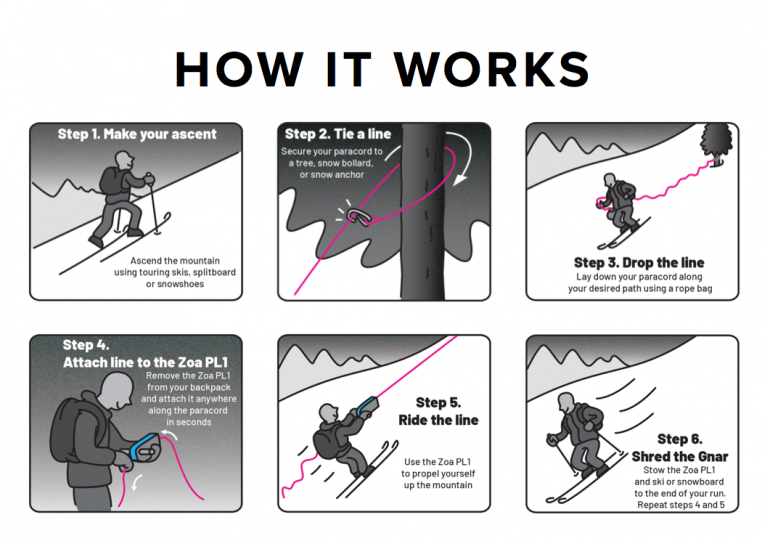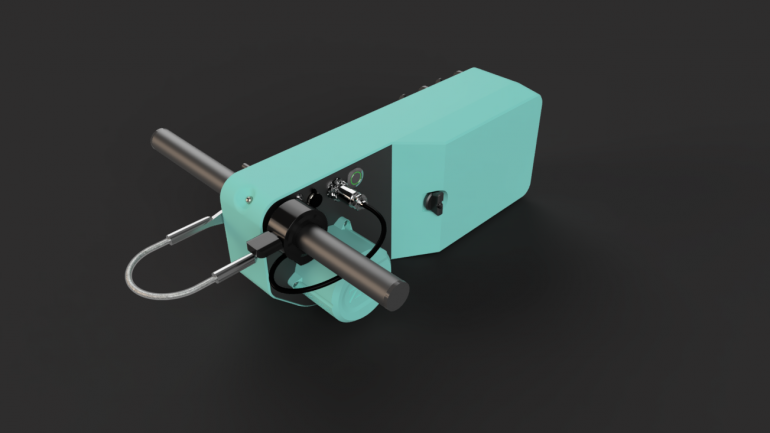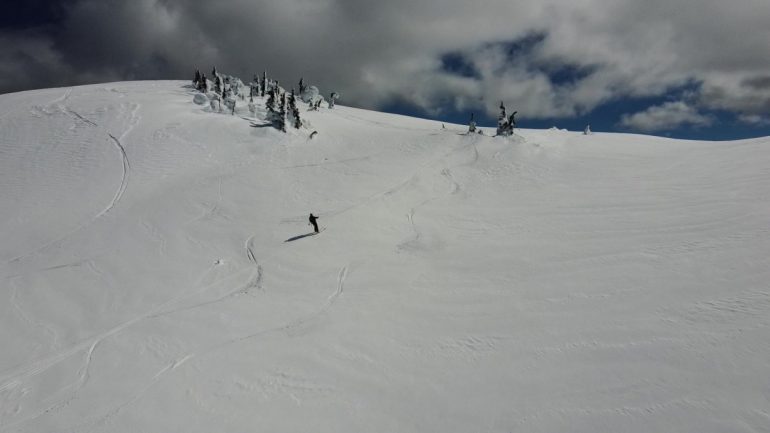
A sleek design for a portable rope tow. The ZOA PL1.Photo: Zoa.
The tag line comes in as straight-up appealing: “Ski More Work Less.” From a basic first-world reading of Maslow’s Hierarchy of Needs, more skiing and less work seem to fit somewhere in there.
Tipped off by a child the other day, some ad or post or a mix of the two, came across his IG feed for Zoa Engineering; Zoa has been covered by ski media previously. From the Google map on Zoa’s website, there’s no physical address listed, they are the brainchild of a Vancouver BC engineer. And Zoa’s goal is to develop a “backcountry rope-tow.”
The “work”, we assume Zoa refers to on their site is the type of “work” many of us enjoy and often want more of. That would be the uphilling work. With all sorts of refined gear out there, moving uphill is often the best part of the day when it’s variable snow conditions. Granted, some like the uphilling work more than others.
Zoa’s portable rope tow makes me laugh, but not in a devious way, more in a humans are an interesting species type of laugh.

A screenshot of Zoa’s how it works.
The premise seems simple. Send a willing person up the slope in skins, snowshoes, whatever. This will require some work. Anchor the provided line (paracord). Descend with the line. Attach the Zoa PL1 to the line. As the Zoa “How it Works” copy reads (and illustrates) step 6 is “Shred the Gnar.” That’s it. We assume the process repeats itself until the Zoa’s battery drains, the pow is skied out, or the hucker is no longer amusing.
According to Zoa the device weighs 10.5lbs (4.8kg), while the cord weighs 6.61 g/meter; they claim the device will fit in a backpack. The website states, “The PL1 is still in development and specifications may change due to user feedback, production considerations, and improved test data.”

The handle is removable for better storage. The bosy also includes a u-cable, serving as a backup anchor point to clip into on steeper terrain. Photo: Zoa.
The package looks well-engineered and snazzy in its mint-green color. It comes with a steel “lanyard” for a backup clip-in point for steep terrain and boasts an adjustable throttle to control ascent speed.
The most eye-catching stat is this: max vertical 2600 ft (800m). No matter how you look at it, that’s some serious vert. And for the work averse, this gadget does nearly all the vertical gain work for you. So if we assume on an average backcountry day, 80% of the time a skier ascends, the remaining 20% they shred, the math could play well in favor of those wanting to “work” less, or, at a minimum, better balance out the work/fun ratio.

The Zoa PL1 in use. Photo: Zoa.
With a few Zoa PL1s deployed in the field, that 80/20 breakdown could very well flip flop. And with a lot of cord, you could almost go work-free up an entire volcano. One blog post says batteries are swappable in the field.
And too, there’s this to think about: Although maybe outdated research, a 2012 Washington Post story states, “The happier you are, the better, right? Not necessarily. Studies show that there is a darker side to feeling good and that the pursuit of happiness can sometimes make you . . . well, less happy. Too much cheerfulness can make you gullible, selfish, less successful — and that’s only the tip of the iceberg.”
In this instance, we are equating skiing with fun and the pursuit of happiness, and work as that “meh” kind of work. Be careful what you wish for when skiing more and working less.
For those with a lightbulb going off in the brain, the Zoa PL1 would still qualify as a mechanized device, so no wilderness use is allowed. Otherwise, as Zoa says, “Bring the lift with you.” This lift, however, remains in the beta prototype phase.
Jason Albert comes to WildSnow from Bend, Oregon. After growing up on the East Coast, he migrated from Montana to Colorado and settled in Oregon. Simple pleasures are quiet and long days touring. His gray hair might stem from his first Grand Traverse in 2000 when rented leather boots and 210cm skis were not the speed weapons he had hoped for. Jason survived the transition from free-heel kool-aid drinker to faster and lighter (think AT), and safer, are better.
